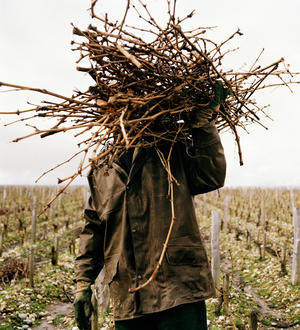2021 Les Manyes, Terroir al Límit, Priorat, Spain
- Red
- Dry
- Full Bodied
- Grenache
Add to wishlist
Product: 20218041959
75 cl Bottle
Colour Red
Sweetness Dry
Vintage 2021
Alcohol % 13.5
Grape List Grenache
Body Full Bodied
Property Terroir Al Limit
About this wine

Grenache/Garnacha
Grenache (Noir) is widely grown and comes in a variety of styles. Believed to originate in Spain, it was, in the late 20th century, the most widely planted black grape variety in the world. Today it hovers around seventh in the pecking order. It tends to produce very fruity, rich wines that can range quite widely in their level of tannin. In many regions – most famously the Southern Rhône, where it complements Syrah and Mourvèdre, among other grapes – it adds backbone and colour to blends, but some of the most notable Châteauneuf du Pape producers (such as Château Rayas) make 100 percent Grenache wines. The grape is a component in many wines of the Languedoc (where you’ll also find its lighter-coloured forms, Grenache Gris and Blanc) and is responsible for much southern French rosé – taking the lead in most Provence styles. Found all over Spain as Garnacha Tinta (spelt Garnaxa in Catalonia), the grape variety is increasingly detailed on wine labels there. Along with Tempranillo, it forms the majority of the blend for Rioja’s reds and has been adopted widely in Navarra, where it produces lighter styles of red and rosado (rosé). It can also be found operating under a pseudonym, Cannonau, in Sardinia.

Terroir Al Limit
Established in 2001 by Eben Sadie and Dominik Huber, the wines have always been exceptional, but Dominik now produces some of the best wines made in the region. The stars of the show are the single-vineyard Cariñena, Les Tosses and the Garnacha, Les Manyes. Not forgetting their superb white, Pedra de Guix, a blend of one-third each Pedro Ximénez, Garnacha Blanca and Macabeo, reminiscent of great Chenin Blanc. Les Tosses was the first of these wines in the range, first made in 2003. It comes from a vineyard at 600m. above sea level, the highest in Torroja del Priorat. The vines here are 80-year-old on steep black slate slopes, with blazing southwestern exposition. There is a rugged, raw power to this wine. Opulent black fruits and rich aromas of smoke and spice swirl in the nearly black depths of the glass. Despite the initial hint of brawn, a serious, thoughtful character emerges with a bright, taut acidity. Situated at the top of a monastery in the village of Scala Dei, 800 meters up the high slopes of the Montsant mountains, the west-facing Grand Cru vineyard of Les Manyes is a universe unto itself. The Garnacha Peluda (‘Hairy grenache’) vines that grow there are a rare variant of the region’s more popular Garnacha Tinta. They are equipped with a fine, downy fuzz on the underside of their leaves that conserves moisture in the blazing heat - allowing them to thrive even in this hot and challenging climate. Lower sugar levels also mean lower alcohol levels, lending an unmistakable brightness and elegance. The distinctive chalk-rich clay soils mark the Garnacha fruit with a minerality, structure and elegance. The grapes are hand harvested, whole cluster fermented, and then aged for 16 months in cement. Pedra de Guix is a blend of old vines of the region’s most important white varieties: Pedro Ximénez, Macabeo and Grenache Blanc. Steep slopes and concentrated fruit, together with a traditional approach in the cellar. Following a hand harvest, the whole bunches undergo a gentle basket pressing, vinification in cement tanks, and then two years of ageing in French oak tonneaus (500l) and foudres (1200l). The PX is left alone to undergo a controlled oxidation before blending. The hands-off biodynamic approach reflects the alluring taste of time and patience, a gentle velvet beauty that moves with waves of citrus, nuts and flowers across the palate. Rich, soft and ripe. The longer it is opened, the fresher it becomes in the glass, developing tension, depth, and a mouth-watering salinity expressing the soils of the region: clay, alluvial and slate.
